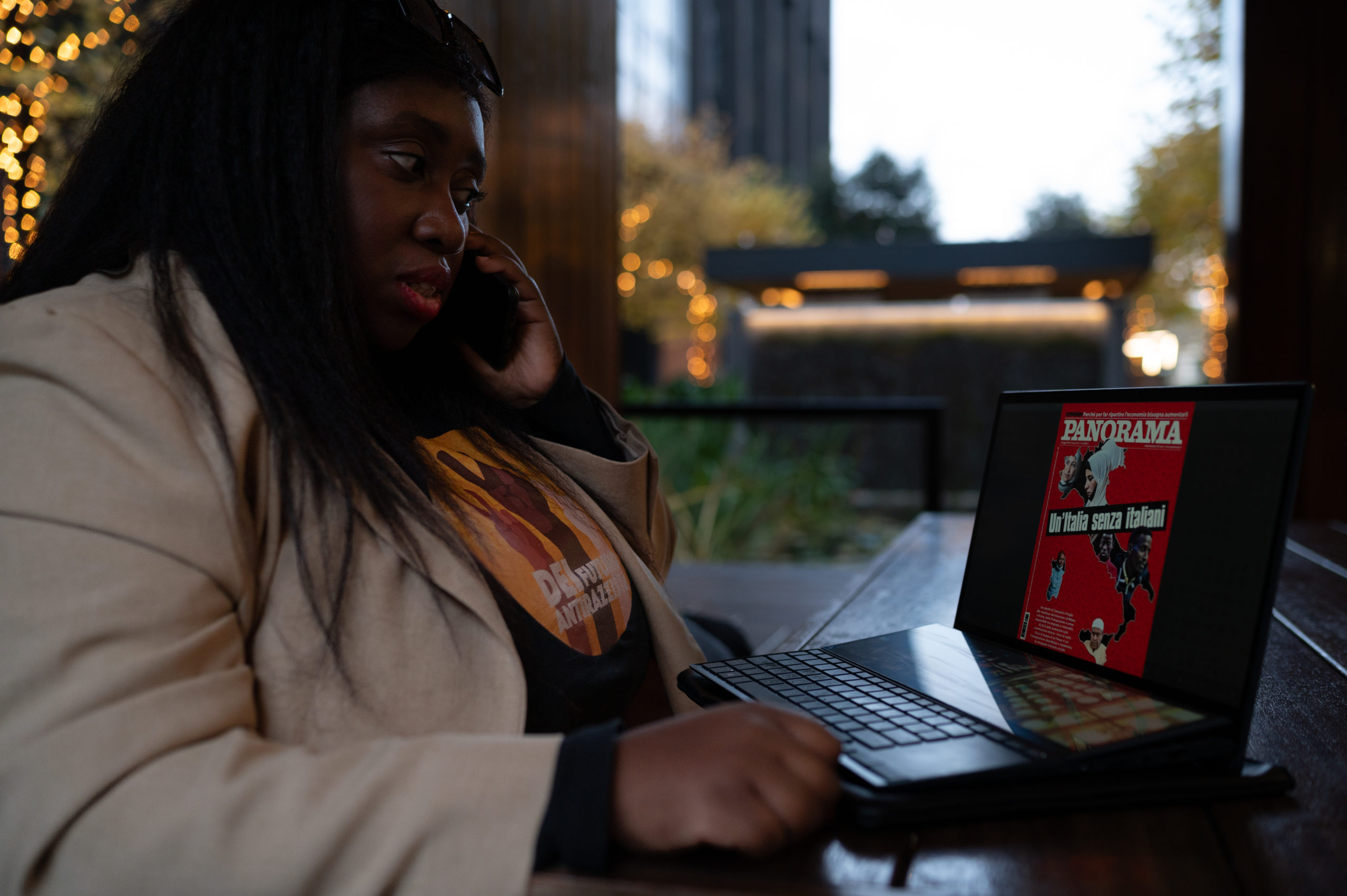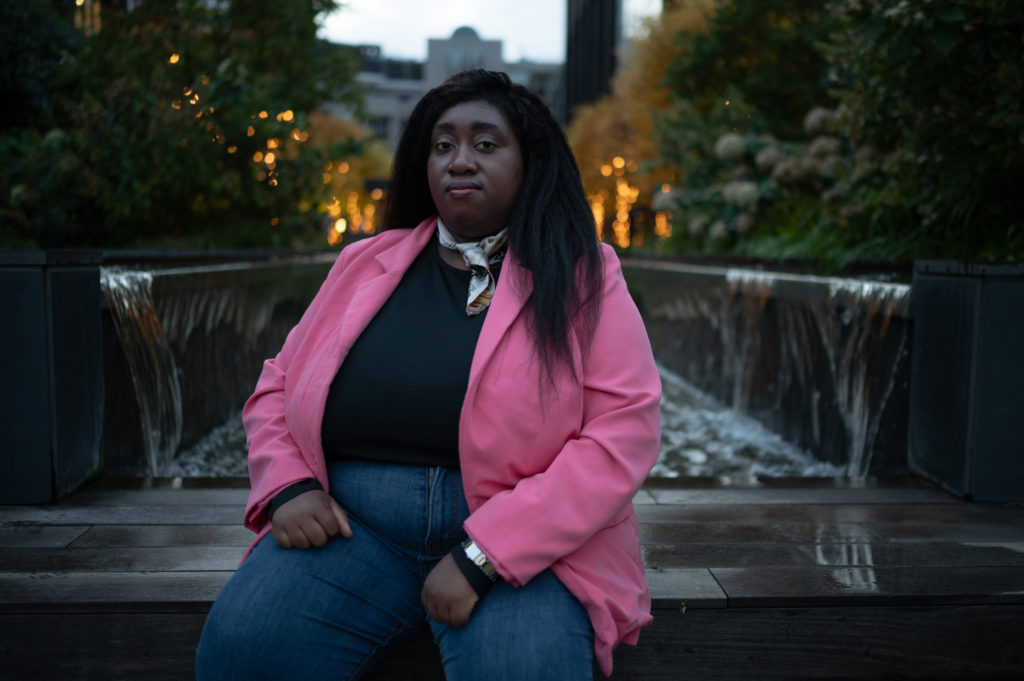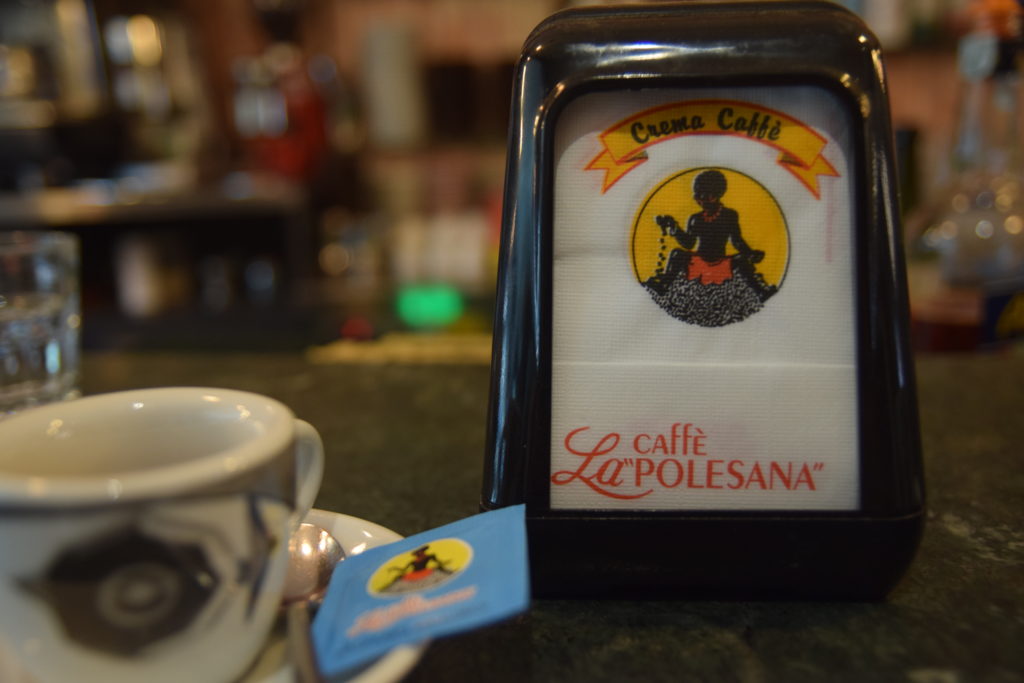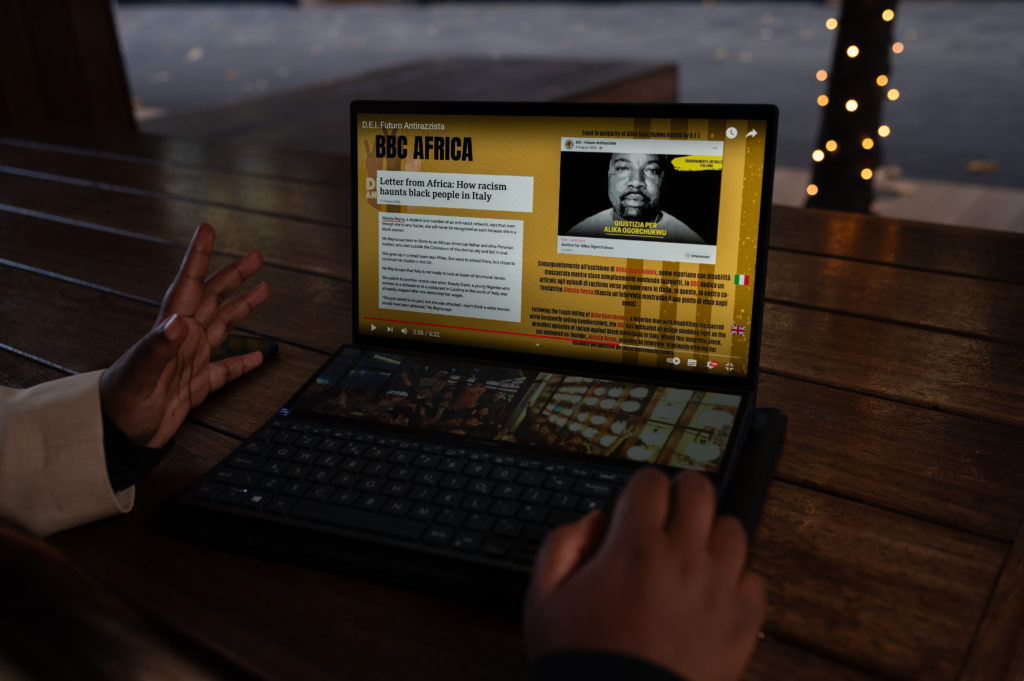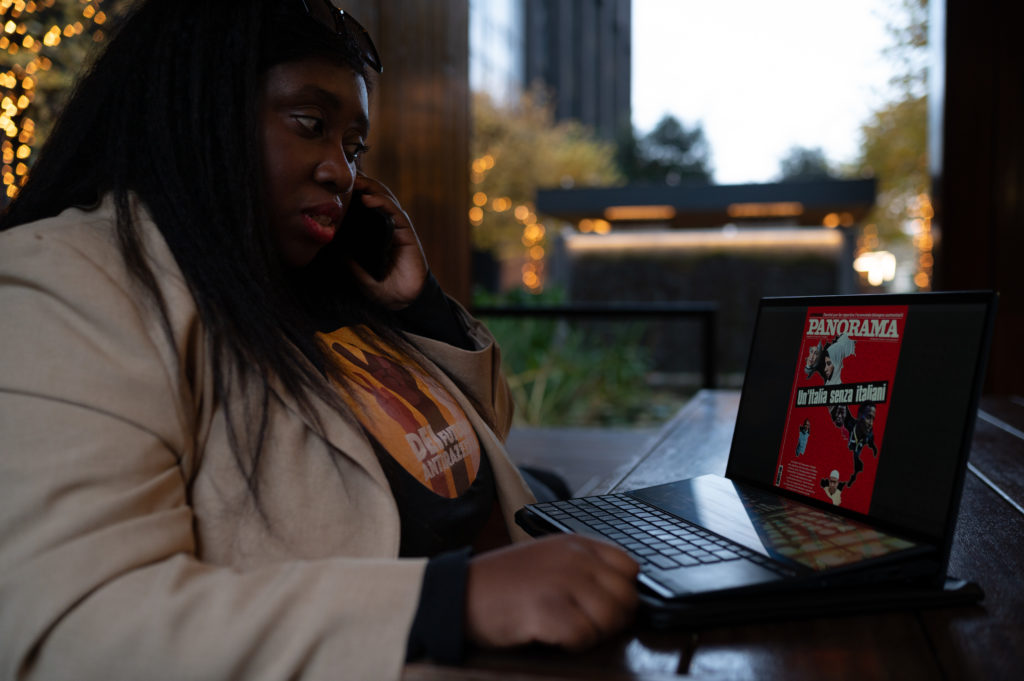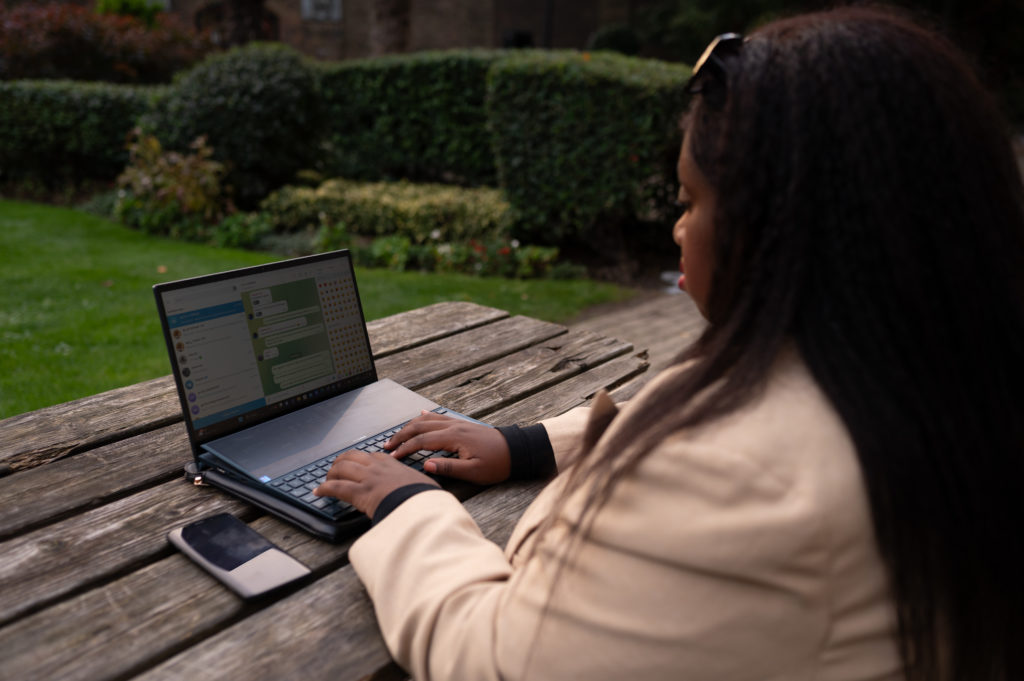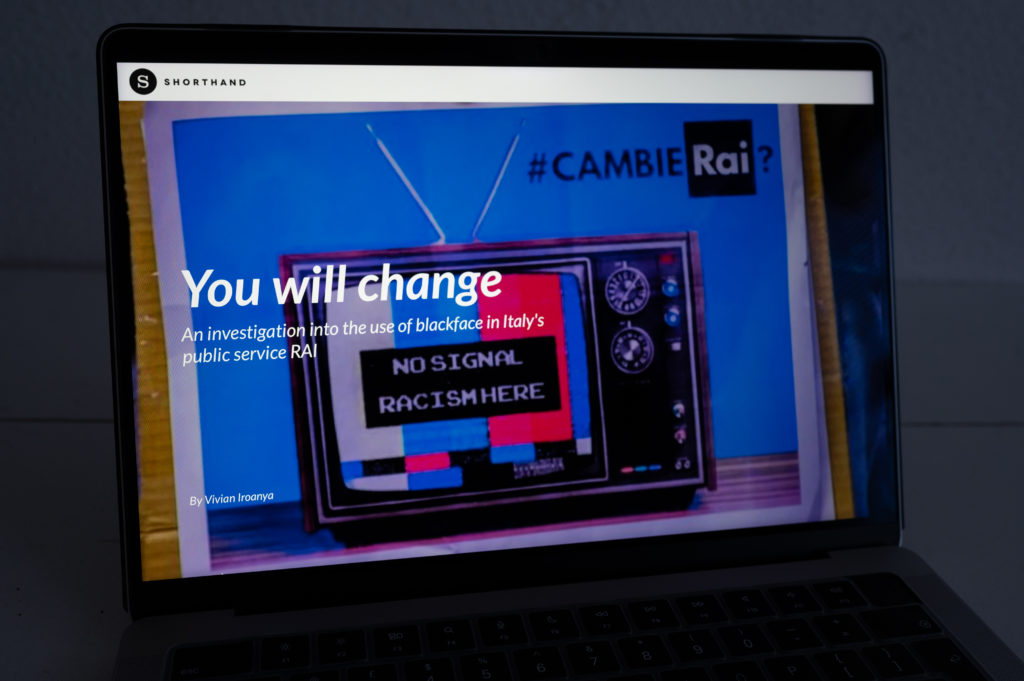Blackface, lack of representation, historical erasure, stereotypes on TV and in school books… Living in Italy as a Black person can be a struggle. So much so that some decide to move abroad. But this does not mean the end of their fight against racism in Italy —in fact, it has only just begun.
Alessia Reyna grew up in a small town in Italy with her African-American father and Peruvian mother. Because of discriminatory perceptions of black people, it was far from an idyllic childhood. “I was the only black person,” she says, talking ardently over a video call. “I lacked so much representation I convinced myself I was white inside.” She may have been born in Italy, but for some her skin colour meant she could never be a true Italian.
The construction of an identity
People of colour are frequently excluded by Italian society despite being part of the country’s history for decades. Their presence has gone unacknowledged as part of the construction of the Italian identity and image. For sociologist Mauro Valeri, this erasure of Italy’s black citizens is “a history that still needs to be written.” The culprit? The fascist ideology of the 1930s that redefined Italians as Arian and Catholic and reimagined race as part of an ideological structure of white superiority and national identity
At that time, imagery in the media and propaganda was a key mechanism for incarnating an archetype of the Italian race —and its antithesis. During the Fascist regime, black bodies and faces were represented in highly characterised forms. This helped transform “inconsistent and vague notions of identity and race into concrete and effective ontologies,” writes Lucia Piccioni in her essay Images of black faces in Italian colonialism. One magazine in particular, La Difesa della razza, was prolific in its use of graphics to construct theories of race. One cover from the 5th August 1938 juxtaposes the profiles of an ancient classic sculpture with a 3rd century BC caricatural terracotta sculpture of a ‘Semite’ and an anthropological photograph of a Sudanese woman. A sword is being held between the classical bust and the other two to signify the determination of the Fascist regime’s racial policy to prevent any form of miscegenation.
Although you would think that this racist propaganda would have been eradicated with the end of fascism, it still lives on. During Reyna’s childhood, dehumanising imagery continued to taint Italian media. Blackface —where non-black performers use theatrical makeup to darken their skin —was commonly used in TV programmes. People of colour were also invited onto shows as the subject of mockery, the 31-year-old remembers. “Since they knew their role was to be made fun of, they also played the role,” Reyna says. “It wasn’t their fault, but the media didn’t realise the consequences of this.”
"As a kid, I was scared of the media."
For Reyna, every satirical and stereotyped appearance of a black person on TV meant potential derision for her at school. “I remember being mocked by the whole school for my hair because of the hairstyle of a black actress,” says Reyna, whose long black hair is pushed back over her shoulders. “I was scared of the media.”
A childhood of self-hate
Vivian Iroanya, whose parents moved from Nigeria to the Italian city of Padua in 1997, experienced similar racism and microaggressions growing up. Other children would make fun of her hair and skin colour as well, she says, and children would refuse to play with her. But she also found that the omission of Italy’s black history from textbooks was equally damaging —in particular Italian colonialism. “The material does not go in-depth, talk about the number of people who were killed or the horrific things that happened,” she says. “If you don’t teach these things, it can swell into the racist attitudes some Italians have.”
Today, this visual othering continues relentlessly. In 2021, racial stereotyping in primary school textbooks sparked an outcry. In one book, a cartoon shows a black child saying in broken Italian that his New Year goal is to learn the language properly. In another, a white boy asks a black girl “Are you black or are you dirty?” For Reyna, the fact that this appeared in a book means children will assume it “must be true.” “These books make me feel anxious for the future generation,” she adds. “If during our generation ‘Italy wasn’t open enough’ what is Italy’s excuse now?”
Go for a coffee in northern Italy, and you might find your sugar packet has a logo of a caricatured young black woman sitting astride a pile of sugar. She is barefoot, wearing nothing but a loincloth, and her facial features are grotesquely exaggerated. Another brand used a line drawing of a waiter whose face has been replaced by a dark brown coffee bean – dehumanisation to the point that he equals nothing more than the product he’s serving. Although they have since changed their logo, the image is still in circulation on old merchandise and advertising.
Social media has also been a boon for right-wing politicians looking to propagate ‘images’ of black people. In 2018, notoriously anti-immigrant party leader Matteo Salvini wrote on Twitter: “A 25-year-old girl was attacked in the Milan train station, saving herself from RAPE only through the use of pepper spray. The rapist was arrested today, let’s hope this time he finds a judge who keeps him in prison for years. P.S. I am not allowed to tell you that the rapist is Nigerian, an illegal immigrant with a criminal record, or I will be accused of RACISM.” Salvini omitted that the victim herself was an immigrant walking back home after a night shift.
Thirty-one percent of Italians state "their preference for a society composed exclusively of people of the same skin colour."
This kind of rhetoric has reinforced a connection in public consciousness between skin colour, illegal immigration and a danger to Italian society. Compounded by the European refugee crisis, these ideas are fostering a society that continues to equate whiteness with national identity and legitimacy, and blackness with a threat and a pollutant. According to a poll from Enzo Risso published in Domani in January 2023, 31 percent of Italians “clearly and bluntly state their preference for a society composed exclusively of people of the same ethnicity and skin colour.” For Reyna, this meant she grew up feeling “totally alone” and like she didn’t fit in anywhere.
Standing up to racism
When Reyna reached her twenties, she began to analyse the self-hate she had been harbouring. “I soon realised I was not the problem in Italy, the system was the problem,” she says. Her first reaction was to leave Italy for Japan. “I was going through depression and I thought either I give up or I stand up and do something.” In Japan, she found a society where she didn’t feel the hate directed at her that she felt in her own country. Iroanya, too, felt such a lack of support in Italy that she moved to the UK. “I wanted to be a journalist, but I had never seen a black person doing that job on television in Italy,” she says, dressed in a smart jacket after a day at her job as associate editor for a London firm reporting on energy markets. “When I saw how different it was in the UK, it was crazy.”
After the killing of George Floyd by a police officer in the US, Reyna returned briefly to Italy to find slogans like ‘all lives matter’ circling. She was so frustrated by this reaction that she co-founded a group called Black Lives Matter Italia, which later became D.E.I Futuro Antirazzista. One of the aims of her organisation is to document the shockingly frequent episodes of racist representation of black people in the Italian media. For instance, blackface continues to be used in comedic sketches, which the group defines as “systematic racism on national television with no consequences.” Similarly for Iroanya, blackface and other forms of ridicule in the media allow for racism to spread unchecked in Italian society. “If children watch television and see racist jokes it becomes a cycle,” she says. “Young people will pick it up and continue the racist behaviour.”
Reyna and her activist group also highlighted the explicit racism on the cover of the May 2023 edition of Panorama magazine. The page is emblazoned with the words ‘Un’Italia senza italiani’ (An Italy without Italians) superimposed on an outline of the map of Italy filled with the faces of people of colour. “None of this was accidentally done,” D.E.I Futuro Antirazzista’s Instagram post reads, “starting from the choice of colour: red, to communicate a state of alarm with a subtle pattern that vaguely reminds us of Arabic imagery and lastly, here they are, the non-white bodies the Italian boot can barely contain.” For Reyna, the image belaboured the point that Italians can only be white and Catholic. “I know people who felt awfully uncomfortable, others who felt embarrassed and ashamed,” she says, “and personally, I felt disgusted, and I thought that my country failed us again.”
Representations of black people in the media and the entertainment industry continue to be so selective and stereotypical that the release of a Netflix series in 2021 with a predominantly black Italian cast made international headlines. Zero follows the escapades of a teenager who discovers the ability to become invisible —symbolising the marginalisation of people of colour in Italy— and saves his neighbourhood from crime. “It goes beyond the black skin. It’s about precisely narrating Italy in 2021, something that the media don’t do. They show Italy as it was 25 years ago, while my goal is to narrate as it is in 2021,” said Dikele Distefano —co-author of the show and of the book “Non ho mai avuto la mia età”, or “I have never felt my age,” upon which Zero is based— to the American media WWD.
For Reyna and her association, calling out the racism endemic in Italian society has been a continual battle. “We receive constant complaints, we were reported and had our webpage shut down,” Reyna says. “But I keep working hard, I want to bring awareness,” Reyna says from her flat in the UK where she decided to move two years ago. At D.E.I Futuro Antirazzista, she works with 30 other members attending meetings and catch-ups and sometimes dedicating several hours a day to the organisation.
In the UK, Iroanya has managed to become the journalist she wanted to be. Among other topics, she’s been writing about her plight as a ‘second-class citizen’ in Italy and has conducted investigations into the use of blackface in the media. “I’ll continue reporting on black Italians and social issues and try to do the best I can,” she says.
When asked if either of them will return to Italy, the response is unequivocal. “The only reason I would return to Italy is to meet other activists because I want to engage with them —or for a holiday. Otherwise definitely not,” says Iroanya. “No way,” is Reyna’s response. “Even if I went to a big city where I know there are people like me that are born and raised there, I know I wouldn’t live happily.”
Voices that are underrepresented are misrepresented
The news media is meant to serve the public, and reflect the stories that the public find important. But often inside newsrooms, we see a very slim segment of the public actually represented. Newsrooms are often predominantly white, with mostly male managers. While white men aren’t necessarily bad journalists, homogeny is always bad for an industry meant to represent diversity. From Covid to the climate crises, we’ve seen an uneven emphasis on the white and wealthy in society, to the detriment of everyone else.
At Unbias the News, we have spent several years studying the barriers to diversity in the media. One major issue is bullying and harassment. Black journalists report being perceived as “political” just for existing, having their story ideas assigned to colleagues, or receiving unwelcome comments on their appearance.
Meanwhile, an overall “extractive” approach to the media continues to undermine equality and reproduce colonial attitudes towards the Global Majority. For instance, people from countries with lower GDPs receive less money for working the same story for the same outlet, even though the work expectation is the same. In addition, white journalists sometimes present as their own, stories that required extensive labour by Black colleagues, taking credit for another’s work, and denying the bylines and professional accolades that come along with that credit. As my colleague Wafaa Albadry has written, “Even if we have more knowledge, it is not trusted.”
These dynamics are unlikely to change so long as power remains concentrated in the hands of a few, journalists jealously guard their bylines, and racist bullying remains unpunished or remarked upon in the newsroom.
But perhaps there is some minor good news. First, more journalists are realising they must collaborate in order to report on the multiple crises affecting their audience, and collaboration doesn’t gel well with hogging credit and spotlight. Second, there are independent outlets out there that are attempting to shake up traditional dynamics, hire people to report on their own communities, and prioritise diversity in their newsrooms. These efforts deserve your support and amplification. And third, audiences are demanding more diversity in their news consumption, tired of hearing similar takes on the day’s most important stories. This provides an opening for the voices that have been buried in the past to come to the forefront.
Nevertheless, we are nowhere near reaching a status quo of equality, diversity and respect in the average newsroom, and this should worry us all. Because in a climate of polarisation, people seeing their own communities be continuously maligned and misrepresented only increases distrust in the media. The only way this can change is if the media strives to accurately reflect the public, in all of its diversity, and looks at problems through the many different lenses our societies engage in, but our media rooms too seldom publicise.
